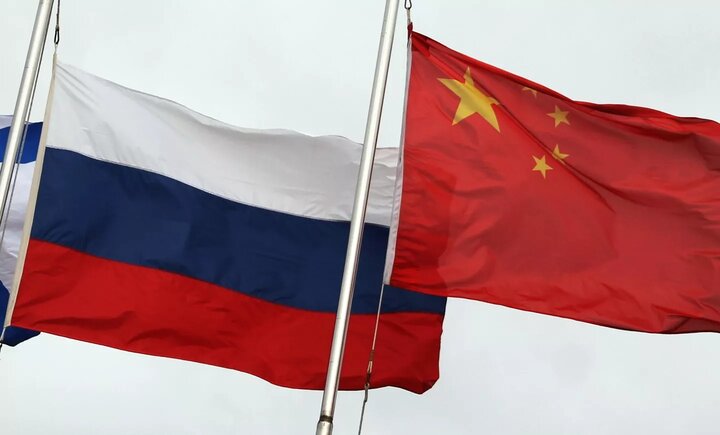China -Russia trade expands with Trump’s tariff warfare

reports Mehr News Agency ; Russia is a growing source of energy resources for China and is emerging as an important destination for cars and other Chinese transport equipment.
Increase in China and Russian trade
only 2 % of Chinese export of Chinese transport equipment to Russia reached Russia. By year 2, that figure was more than 2 %. In fact, by changing the direction to developing countries, China’s share of trade with the European Economic Union has declined slightly. This was mainly due to a change in the Chinese import sector until European economies lost a significant share in each sector. For example, European economies gained a share of Chinese transport equipment between the ages of 1 and 2, an increase from about 2 % to about 2 percent. However, the total value of China’s imports in this sector declined by about 5 % annually, as China’s domestic automotive sector continues to grow and reduces its import dependence.
as a result, the export value of European transport equipment to China was stagnant. A similar pattern can be seen in the export of textiles and clothing and to some extent chemicals and pharmaceuticals to China. In addition to a 5 % tariff on US goods, the China Customs Office announced that it would import meat and poultry bone powder from the US poultry companies and imports Surgom from an American company because of what a forbidden bacteria or chemicals.
over the past two weeks has been the main factor affecting the price of cereals, changing the status of US import tariffs on Mexico, Canada and China. The tariff warfare reduces poultry exports to China by 5 %, which is expected to be hundreds of millions of dollars. Geopolitical tensions can shake world markets, and increase geopolitical tensions, including US tariffs on imports and retaliatory tariffs on US poultry, can also lead to trade war and change of the world’s protein commodities.
Brazil and Thailand are expected to benefit from these geopolitical tensions. “They are currently gaining market share in markets like China and Mexico, and the trend will probably continue, especially if trade tensions are intensified,” says one economist. In addition, if the peace agreement is reached in Ukraine, it can affect the trade flow of several exported agricultural products, such as poultry and food. Indirectly, geopolitical stresses can also lead to change in operations due to restrictions or change of commercial currents of inputs such as agricultural goods and livestock feed additives.
Keep in mind that China, the main US food export market, has already counteracted US agricultural products such as chicken, wheat, corn, soybeans and dairy products. On March 5, China also revived poultry meat export privileges, but the beef trade was in a state of ambiguity.
China is one of the major buyers of US agricultural products. It bought 5 % of US agricultural exports in year 6. That year, the United States had $ 5 billion in agricultural exports. Experts warn that the tariff war with China could reduce the export of US agricultural products by half by half. In the past two years, China’s retaliatory tariffs have reduced US agricultural revenue by 5 %, as China is increasingly pursuing imports from other countries.
China’s retaliatory tariffs are expected to affect US soybean exports, as soybeans are the country’s largest agricultural exports to China. Over the past year, soybean prices in international markets have fallen by 5 %. Any further action by China will exacerbate the losses for soy farmers in the United States. However, if the trade agreement between the United States and the European Union (EU) reached, the EU can transfer soybean and soybean flour imports from South America to the United States.
American and China’s trade warfare for Brazil
American and China Business War will make the most benefit for Brazil. For geopolitical reasons, Brazil has begun exporting more corn to various countries and in some cases surpasses the United States. In the world wheat market, Russia has appeared as a major supplier and applies significant control over prices. Previously, China was the largest buyer of US agricultural products, but during the first Trump administration, tariff policies have led China to provide large amounts of grain and soybeans from South America and Russia. Experts emphasize that China prioritizes supply guarantees over price considerations.
Agricultural trade will continue to be geopolitical and reduce US exports. According to analysts, commercial disorders will be the biggest worrying factor in year 6 due to geopolitics such as US tariff warfare and HPAI.
China uses food as a low-cost and effective weapon in the fight against tariffs. But the United States seems to see geopolitical instability not only in the short term but in the long run a major threat to the global economy. Business may have geopolitical consequences, but business is also a key feature of the global economy and is deeply intertwined with the labor market and economic development. But the way in which geopolitical forces interact with global economic communication, sometimes there are subtle differences; For example, some economies such as China, Germany, the United Kingdom and the United States show evidence of relatively rapid trade re-configuration along the geopolitical lines, while economies such as Brazil, India and “Span Style =” Text-Align: Justify “> Assean In addition, despite the challenge of tariffs and reduced direct trade connections between China and the United States, strong commercial communications in supply chains continue and business dynamics may move on opposite routes on the same corridor.
current changes in the world trade are part of the geopolitical perspective that Holding is well aware of and now designs strategies. For business organizations, it is reasonable to observe changes in the geometry of business, such as the geopolitical distance process as part of their reaction. This answer can also include understanding the consequences of potential business tariffs and strategic opportunities that may provide.
Commercial organizations can be active in trying to accelerate growth, optimize business operations, and create capabilities and strategies to help respond to geopolitical disorders, for example through structural division. Changing tariffs and geopolitical geometry may pose risks, but it can also bring opportunities to this trade war.


